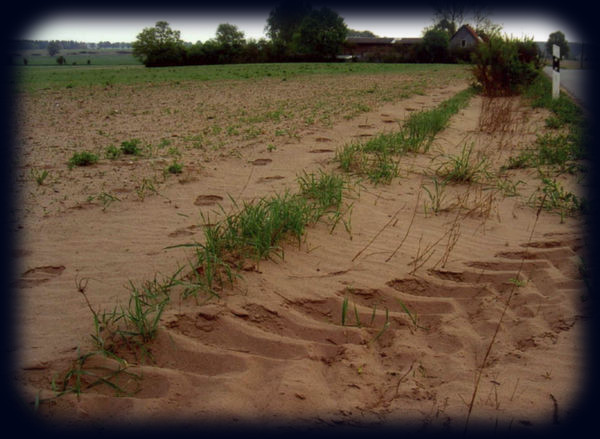Nature, through design or evolution, one not excluding the other, has established sophisticated equilibriums, feedback loops, and cycles (water, carbon, nutrients), all powered by one source: our central star.
We humans in our current state of mind however prefer mono-linear cause-effect, a lot helps a lot, more of the same, trying harder the next time rather than trying differently. But humans are part of nature, so why have we turned out this way? Why are we at the same time the cleverest species and the dumbest, most vicious on the planet?
We know a lot, academically, and we also have tried a lot practically – Permaculture, Terra Preta, agroforestry, dyke-pond system, aquaculture (the type where you establish a sophisticated “friendly” microbiology, precluding the use of any antibiotics or nasties in there) – these are fantastic ways of cultivating with nature rather than against it. They need to become the mainstream, for humanity to survive with a quality of life. This is not scaremongering.
Through trying to operate circular nature with mono-linear cultivation methods, we have brought about rapid degeneration and primarily local climate change. We see alarmingly reduced soil fertility and significantly more freaky weather conditions, droughts and flooding – but since the latter is all statistics, you cannot say with perfect certainty that it’s down to global warming / climate change. It’s not about the 2 degrees or more that the global average temperature may rise. It’s about our climate being thrown out of kilter.

Climate change has to be seen in the context of top soil erosion and alarming loss of soil fertility, and the disturbance of nature’s most important functions, which are: 1) balancing out the daily solar irradiation peak, and 2) retaining water and nutrients in the system. These two functions are linked, as nature uses the hydrology cycle to dissipate and smooth out the solar energy input mainly by evaporation and condensation of water, the substance with the highest specific heat capacity on the planet (slightly beaten only by lithium at 181 degrees C!). This cooling effect during the day is most noticeable in or near marshland, swamps or (intact) forests. Nature also keeps nutrients on site, mostly bound in biomass (humus, vegetation, bacteria, plankton and animals) and optimises the nutrient cycle by minimising waste. (Loss of species diversity is a symptom often associated with the degradation of these vital functions, as diverse natural communities often perform best at fulfilling these functions.)
Now, humans have degraded these systems and opened the hydrology and nutrient cycles, generating lots of waste, accelerating by factors of 10s to 100s the leaching of nutrients into the oceans. For the time being, we are able to maintain agricultural productivity by using high amounts of fossil fuels, not least for producing nitrogen fertiliser from atmospheric nitrogen by way of the hugely energy-intensive Haber-Bosch process. And while fossil fuel isn’t exactly running out, we had (or are very close to) the production maximum or “peak oil” (temporarily shrouded by the current hydraulic fracturing or fracking hype). Obtaining and burning fossil fuels has many negative effects on the landscape and human health, a major one being water pollution, but I’m going off on a tangent.
We also encapsulate biomass with high levels of “toxins” in it (sludge/biosolids) and withhold it from the natural cycles. Nature has sophisticated ways of dealing with most of these “toxins”, including sequestering heavy metals.
And by the way, this completely harmless yet all hyped-up CO₂ has a minor role in climate change, which, as explained, happens mostly locally due to destructively opening up the hydrology and nutrient cycles. Due to the colossal infatuation with this “see oh too” stuff, a vast majority of effort has been concentrated on dealing with curbing emission of it, and given rise to a highly profitable economic bubble called carbon trading.
So in summary, climate change is not a scare, it’s a very real and increasing threat, it’s just that our perspective, and thence our remedial efforts, have become almost completely side-tracked.
Sources
Specific heat capacity (incl. table near the bottom):
On the highest-level threat of soil erosion (just a few examples among many):
- www.fao.org/docrep/t0389e/t0389e02.htm
- www.earth-policy.org/books/out/ote5_2
- worldwildlife.org/threats/soil-erosion-and-degradation
On water being the master agent in (local) climate change:
- aquaterra-berlin.de (German only -- Systeminstitut Aqua Terra (SAT), an independent institute grown out of the former institute for limnology at the Technical University of Berlin, led by Prof. Wilhelm Ripl)
- “Back from the Brink: How Australia’s Landscape Can Be Saved” by Peter Andrews, a farmer in Australia who experienced the effect of water retention in the landscape first-hand, by restoring functioning vegetation cover, a work that was informed and assisted by Prof. Ripl. Peter Andrews’ website around Natural Sequence Farming is at www.nsfarming.com.
